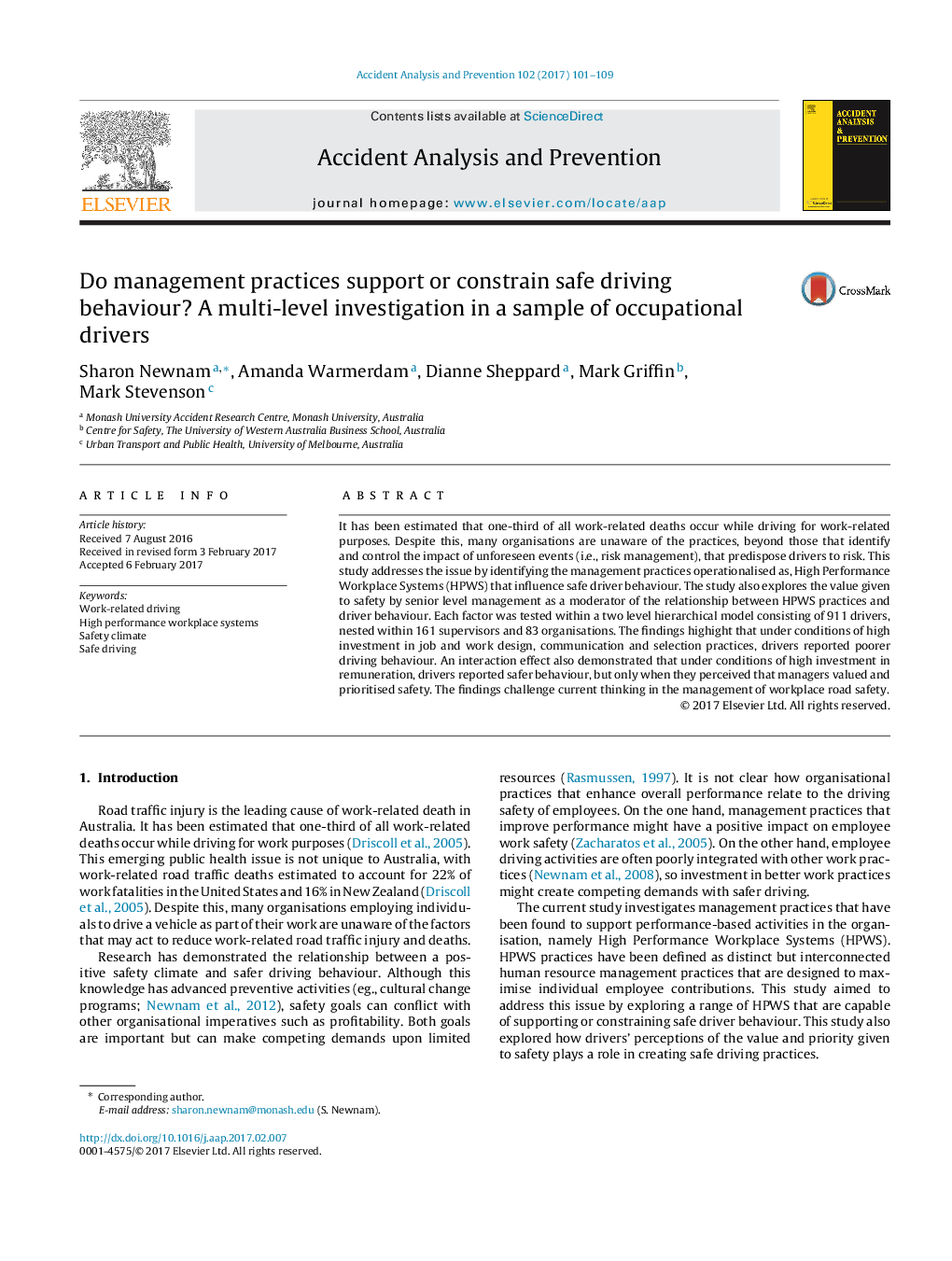| Article ID | Journal | Published Year | Pages | File Type |
|---|---|---|---|---|
| 4978596 | Accident Analysis & Prevention | 2017 | 9 Pages |
Abstract
It has been estimated that one-third of all work-related deaths occur while driving for work-related purposes. Despite this, many organisations are unaware of the practices, beyond those that identify and control the impact of unforeseen events (i.e., risk management), that predispose drivers to risk. This study addresses the issue by identifying the management practices operationalised as, High Performance Workplace Systems (HPWS) that influence safe driver behaviour. The study also explores the value given to safety by senior level management as a moderator of the relationship between HPWS practices and driver behaviour. Each factor was tested within a two level hierarchical model consisting of 911 drivers, nested within 161 supervisors and 83 organisations. The findings highight that under conditions of high investment in job and work design, communication and selection practices, drivers reported poorer driving behaviour. An interaction effect also demonstrated that under conditions of high investment in remuneration, drivers reported safer behaviour, but only when they perceived that managers valued and prioritised safety. The findings challenge current thinking in the management of workplace road safety.
Related Topics
Physical Sciences and Engineering
Chemical Engineering
Chemical Health and Safety
Authors
Sharon Newnam, Amanda Warmerdam, Dianne Sheppard, Mark Griffin, Mark Stevenson,
